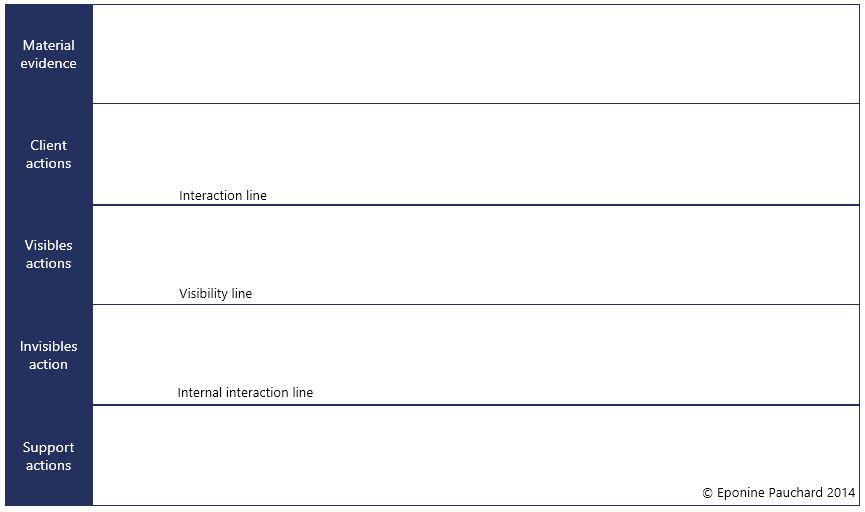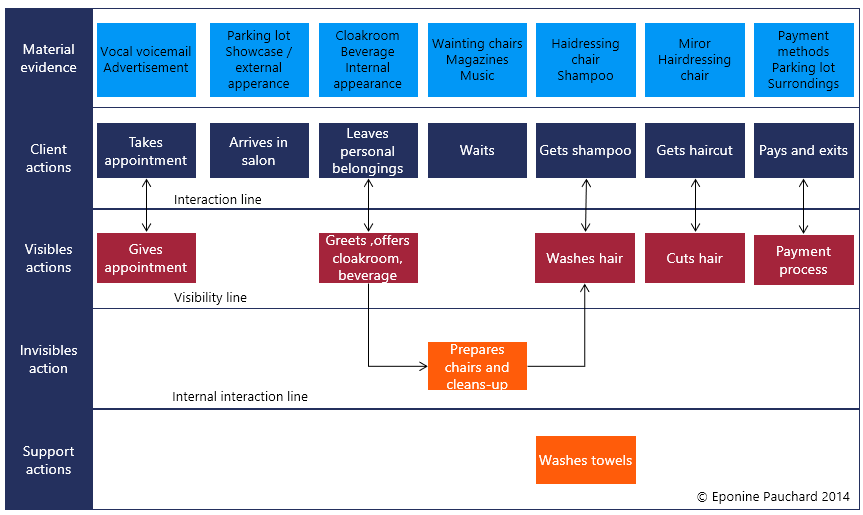There are several ways to map a process or a value chain. I would like to introduce a little-known one: service blueprint. It is particularly suitable for the service sector and the hospital environment.

In fact, you should do a service blueprint every time the customer is at the heart of the process. Many organizations can no longer be satisfied with offering a good product or service. They must be customer-centric and focused on their needs. This mapping links the client’s actions with those of the internal teams. We don’t look at the added value, but at the visibility of the action for the customer. The mapping identifies the organization’s contact points and support processes.
What is the service blueprint ?
It is another way to draw a customer journey ou process. The main objective is to visualize the process through theeyes of the customer.
Customer-oriented mapping is not well documented. There are some examples in English, reference at the bottom of the article. It is however very simple to build and to read, even for the uninitiated. It respects the basic symbols of any cartography. You will find rectangles for actions and diamonds for decisions, linked with arrows. In short, nothing new to begin with. Its main difference is that it groups the actions in five lanes. These corridors are connected to the client and not to an area or workstation, as in BPMN.

The mapping is built from the second corridor: customer actions. In this corridor, the team will record all the steps performed by the client to obtain the service via the process or value chain. You place the steps in chronological order.
Mapping according to the customer’s perception
Then, you indicate all the actions taken by your internal team that are visible to the customer: these are the direct contacts that the customer has with your teams.
The arrows that cross the line of interactions are moments of truth. The line of sight separates the actions that the customer sees from those that he does not.
In the fourth corridor, we find the actions that your teams perform in order to serve the customer. Finally, we finish at the bottom with the internal interaction line and the support actions. It includes all actions performed by individuals or areas of the organization that are not in direct contact with the client. They have to act for the client, but the client doesn’t know it.
The last step in mapping is to indicate all the physical elements in the first corridor. These are all tangible things. These elements can influence the client’s perceptions. This includes, for example, advertising or the reception environment.
Here is an example (at high level) to understand the construction of this mapping:

You can map different levels of detail depending on your needs. However, there are two particularly important things you need to determine before you start building the mapping:
- What are the boundaries of the process, from the client’s perspective: what is the first and last step?
- For which customer segment are we building the mapping?
More information in the article by G. Lynn Shostack on Harvard Business Reviews or on theUniversity of Arizona website
